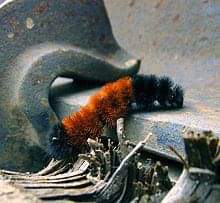ABANYALA BA KAKAMEGA: The Clan of Abatecho

Abatecho is one of the major clans among the Abanyala ba Kakamega but spread across many counties. Members of the clan are found in Navakholo, Busia, (Mp. Charles Asiba's family Busia), Trans Nzoia, Bungoma, Lugari and beyond. Originally, they were called Abadecho. However, due to phonological changes involving consonant devoicing among the Abanyala ba Kakamega between 1750 AD and 1800 AD, the name changed to Abatecho. The consonant devoicing was accelerated by a leadercalled Masiribayi who was of Masai origin. 1. Identity of Abatecho The Batecho among the Bukusu and Abatecho among Abanyala are originally one. They cannot intermary for they can trace their generations to a common ancestry. There is still debate as to whether it is the Abatecho in Bukusu who were originally Abanyala or it is the Abatecho among Abanyala who were originally Bukusu. Furthmore, the bigger issue arises as to whether the Abatecho in Bukusu and in Bunyala were originally part of Abasamia in Samia Bukgw
